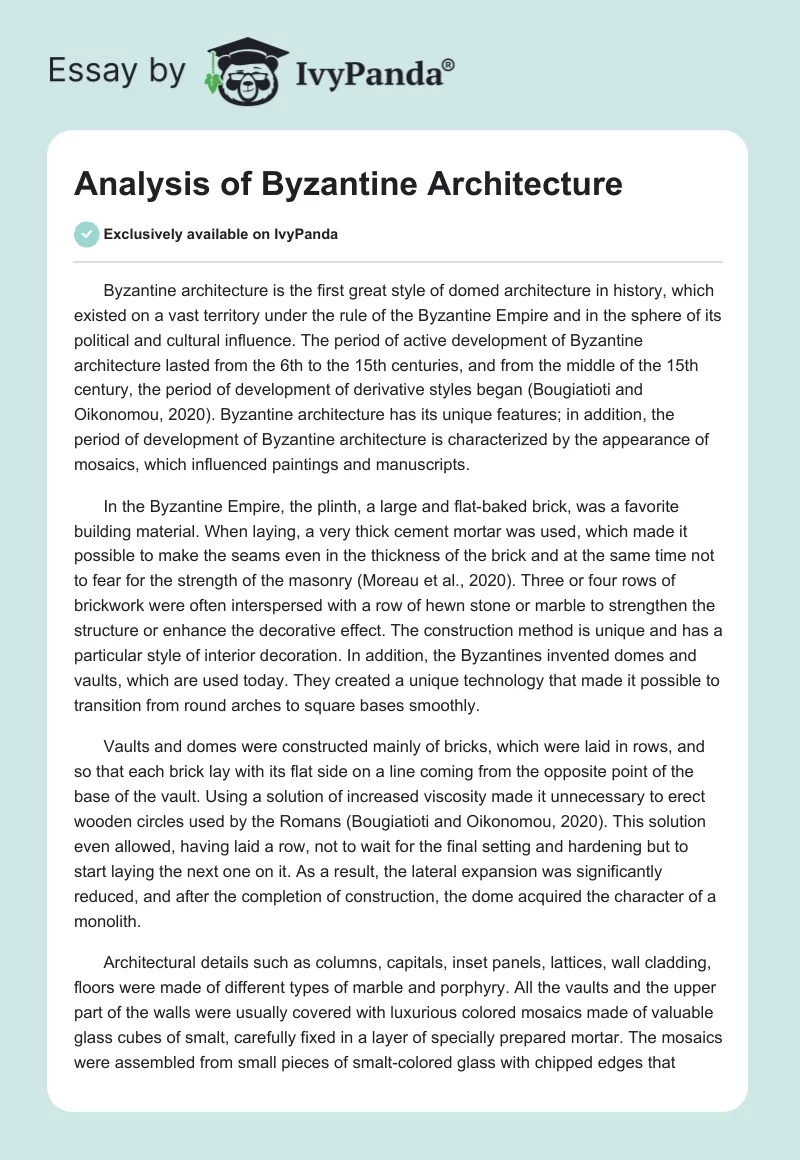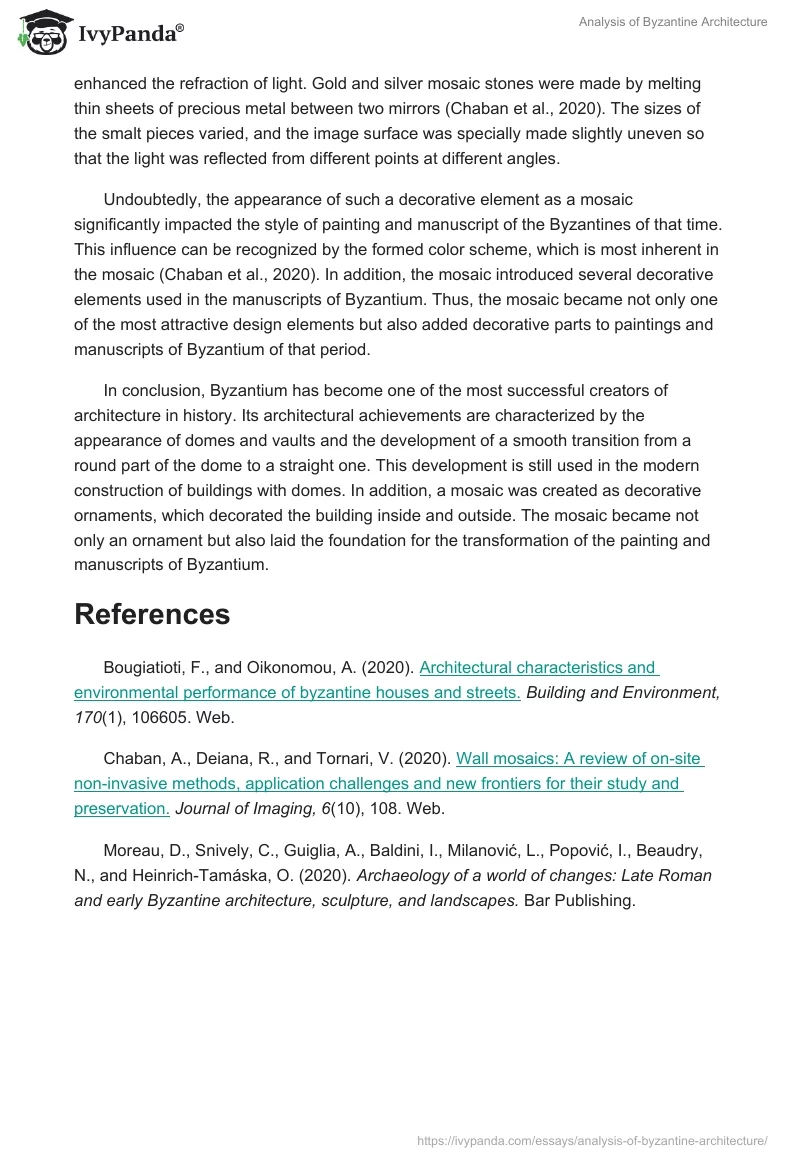Byzantine architecture is the first great style of domed architecture in history, which existed on a vast territory under the rule of the Byzantine Empire and in the sphere of its political and cultural influence. The period of active development of Byzantine architecture lasted from the 6th to the 15th centuries, and from the middle of the 15th century, the period of development of derivative styles began (Bougiatioti and Oikonomou, 2020). Byzantine architecture has its unique features; in addition, the period of development of Byzantine architecture is characterized by the appearance of mosaics, which influenced paintings and manuscripts.
In the Byzantine Empire, the plinth, a large and flat-baked brick, was a favorite building material. When laying, a very thick cement mortar was used, which made it possible to make the seams even in the thickness of the brick and at the same time not to fear for the strength of the masonry (Moreau et al., 2020). Three or four rows of brickwork were often interspersed with a row of hewn stone or marble to strengthen the structure or enhance the decorative effect. The construction method is unique and has a particular style of interior decoration. In addition, the Byzantines invented domes and vaults, which are used today. They created a unique technology that made it possible to transition from round arches to square bases smoothly.
Vaults and domes were constructed mainly of bricks, which were laid in rows, and so that each brick lay with its flat side on a line coming from the opposite point of the base of the vault. Using a solution of increased viscosity made it unnecessary to erect wooden circles used by the Romans (Bougiatioti and Oikonomou, 2020). This solution even allowed, having laid a row, not to wait for the final setting and hardening but to start laying the next one on it. As a result, the lateral expansion was significantly reduced, and after the completion of construction, the dome acquired the character of a monolith.
Architectural details such as columns, capitals, inset panels, lattices, wall cladding, floors were made of different types of marble and porphyry. All the vaults and the upper part of the walls were usually covered with luxurious colored mosaics made of valuable glass cubes of smalt, carefully fixed in a layer of specially prepared mortar. The mosaics were assembled from small pieces of smalt-colored glass with chipped edges that enhanced the refraction of light. Gold and silver mosaic stones were made by melting thin sheets of precious metal between two mirrors (Chaban et al., 2020). The sizes of the smalt pieces varied, and the image surface was specially made slightly uneven so that the light was reflected from different points at different angles.
Undoubtedly, the appearance of such a decorative element as a mosaic significantly impacted the style of painting and manuscript of the Byzantines of that time. This influence can be recognized by the formed color scheme, which is most inherent in the mosaic (Chaban et al., 2020). In addition, the mosaic introduced several decorative elements used in the manuscripts of Byzantium. Thus, the mosaic became not only one of the most attractive design elements but also added decorative parts to paintings and manuscripts of Byzantium of that period.
In conclusion, Byzantium has become one of the most successful creators of architecture in history. Its architectural achievements are characterized by the appearance of domes and vaults and the development of a smooth transition from a round part of the dome to a straight one. This development is still used in the modern construction of buildings with domes. In addition, a mosaic was created as decorative ornaments, which decorated the building inside and outside. The mosaic became not only an ornament but also laid the foundation for the transformation of the painting and manuscripts of Byzantium.
References
Bougiatioti, F., and Oikonomou, A. (2020). Architectural characteristics and environmental performance of byzantine houses and streets.Building and Environment, 170(1), 106605. Web.
Chaban, A., Deiana, R., and Tornari, V. (2020). Wall mosaics: A review of on-site non-invasive methods, application challenges and new frontiers for their study and preservation.Journal of Imaging, 6(10), 108. Web.
Moreau, D., Snively, C., Guiglia, A., Baldini, I., Milanović, L., Popović, I., Beaudry, N., and Heinrich-Tamáska, O. (2020). Archaeology of a world of changes: Late Roman and early Byzantine architecture, sculpture, and landscapes. Bar Publishing.


